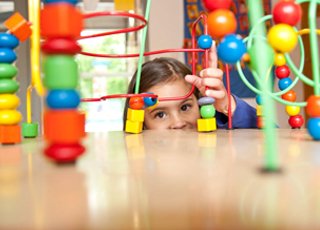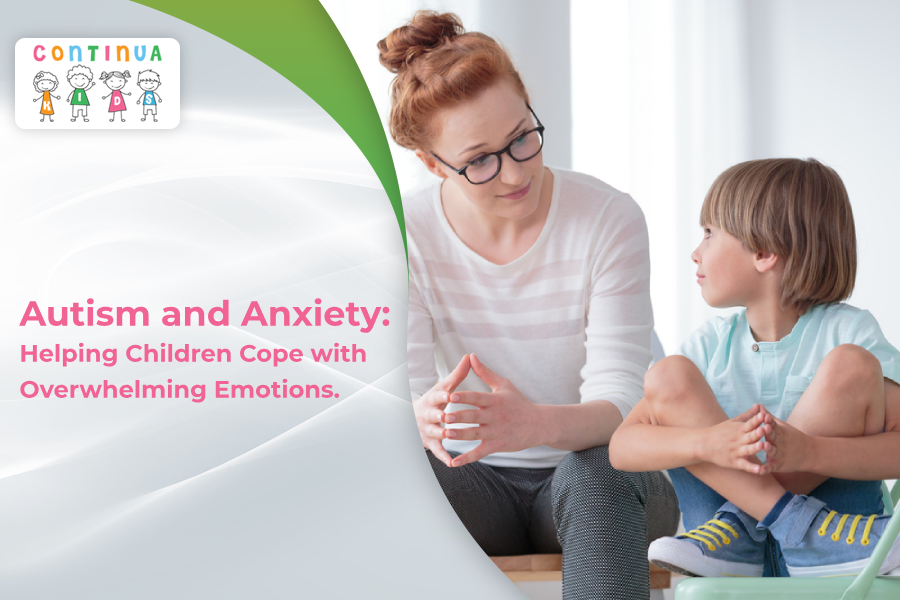What to expect from my a 2 years old child ?
Children develop rapidly at this age. If you have any concerns about your child’s development tell your doctor. A “wait and see” attitude will not work. You can also contact your Pediatrician to refer you to a developmental Pediatrician if your child is not achieving certain milestones or shows concerns in their development. Early Intervention Program have better outcomes .
How would your child express at this age ?
At 2-2 1⁄2, children have about 50 or more words they use to express their ideas. These words are people’s names, objects, action words and words that describe actions or things. Parents should keep in mind these types of words when talking to their children. Encourage them to add new words in conversations. Enjoy your child’s efforts to use language, even when they make mistakes.
What are the motor skills the child is expected to have acquired ?
Between two and three years of age, your child shall become a very skilled jumper. He/ she shall begin by jumping in place on both feet. Next, jumping forward, then backwards, and then sideways. In addition, your child would learn to jump two inches high. Two-year-olds love to jump, but the child is yet to learn what he / she may and may not jump from. In a two-year-old child, balance is improving. Between two and two and a half years of age, they learn to walk on tiptoes, stand on one foot for a second, and take two or three steps on a balance beam.
Using stairs: The child no longer need to hold onto your hand or a rail. They may walk up the stairs by themselves. They do, however, continue to place both feet on each step as they go up the stairs. They get better at going down the stairs, but they still need to hold onto the rail. Between two and a half and three years of age, they walk upstairs alternating their feet placing only one foot on each step. Since alternating their feet is new , they may usually hold onto the rail.
Play. The two-year-old is an excellent climber. Between two and three years of age, their ball skills continue to improve. They learn to throw a ball five to seven feetunderhand, to catch a ball with straight arms in front of my body, and to kick a ball a few feet.
Your child would have expertise in some fine movement skills too by this age.
Putting in, building up, and putting together: In addition to putting circles and squares into a shape sorter, the two-year old can put a triangle into it. By two and a half years of age, your child can imitate a simple train made out of blocks and build a tower using eight blocks.
Writing. As a two-year-old your child may have a much better understanding of what he or she should and should not write on. With practice they may learn to hold a crayon or pencil with my thumb and fingers, and by three years of age, I can copy a circle. They may or may not show a hand preference by this age.
As the fine motor skills become more refined, your child can do very simple craft activities. He or she may enjoy projects that involve paint, scissors, and glue. At first, the child does best with finger paints, but soon they learn to paint with a brush. When they come across a first pair of scissors, they can barely hold them with both hands. By the time they are two and a half years old, they will hold a pair of scissors in one hand and snip a piece of paper in the other. As the child near three, they will snip on a line using scissors, but remember all craft activities require your constant supervision.
Electronic media and its influence on attention and achievement:
A main concern of parents these days is how media technology affects their child’s learning and development. The impact depends on the content. One thing researchers have found is that toddlers do not learn easily from electronic media because they need direct experience and interaction with real people to develop cognitively.
NOW do you know these facts ?
If you have concerns about your child’s ability to communicate, have his or her hearing tested even if this was done in the newborn period because the MOST obvious sign of possible hearing loss is a delay in speech.
Activity time with your child :
Make reading with yourchild part of the dailyroutine. Books and readingencourage development in acouple of ways especially language and learning, but also book-handling skills in young children give you an idea about fine motorskills.





Gmc Acadia Years To Avoid https://medium.com/@yearstoavoid/gmc-acadia-years-to-avoid-5271b9d2c425
Ford Explorer Years To Avoid https://medium.com/@yearstoavoid/ford-explorer-years-to-avoid-bebae6ee4c0e
Honda Civic Years To Avoid https://medium.com/@yearstoavoid/honda-civic-years-to-avoid-6a9eae6cc176
Mazda Cx-5 Years To Avoid https://medium.com/@yearstoavoid/mazda-cx-5-years-to-avoid-d99349330667
Chevy Malibu Years To Avoid https://medium.com/@yearstoavoid/chevy-malibu-years-to-avoid-b54688bddb65
Dodge Journey Years To Avoid https://medium.com/@yearstoavoid/dodge-journey-years-to-avoid-25e959e0f2d7
Kia Sportage Years To Avoid https://medium.com/@yearstoavoid/kia-sportage-years-to-avoid-c36d2e959697
Nissan Sentra Years To Avoid https://medium.com/@yearstoavoid/nissan-sentra-years-to-avoid-d9112915fabb
types of small boats https://twitter.com/typessmallboats
best sailboat for beginners https://twitter.com/bestsailboat
used boat values https://twitter.com/usedboatvalues
Chevy Impala Years To Avoid https://medium.com/@yearstoavoid/chevy-impala-years-to-avoid-4846300cbe24
Kia Forte Years To Avoid https://medium.com/@yearstoavoid/kia-forte-years-to-avoid-9691c14eacfd
Kia Sedona Years To Avoid https://medium.com/@yearstoavoid/kia-sedona-years-to-avoid-80c3a372038f
Toyota Avalon Years To Avoid https://medium.com/@yearstoavoid/toyota-avalon-years-to-avoid-1c81ebc79004
Ford Taurus Years To Avoid https://medium.com/@yearstoavoid/ford-taurus-years-to-avoid-f2bc13e778bc
Toyota Venza Years To Avoid https://medium.com/@yearstoavoid/toyota-venza-years-to-avoid-6a9bc1ec061d
Cadillac Xt5 Years To Avoid https://medium.com/@yearstoavoid/cadillac-xt5-years-to-avoid-9686f70d03d2
Infiniti Q50 Years To Avoid https://medium.com/@yearstoavoid/infiniti-q50-years-to-avoid-e694abf45c83
Mini Cooper Years To Avoid https://medium.com/@yearstoavoid/mini-cooper-years-to-avoid-cfc876e9cfe1
Nissan Xterra Years To Avoid https://medium.com/@yearstoavoid/nissan-xterra-years-to-avoid-c9a2dfd39601
Nissan Juke Years To Avoid https://medium.com/@yearstoavoid/nissan-juke-years-to-avoid-2c27a19ab341
Nissan Xterra Years To Avoid https://medium.com/@yearstoavoid/nissan-xterra-years-to-avoid-c9a2dfd39601
Porsche Cayenne Years To Avoid https://medium.com/@yearstoavoid/porsche-cayenne-years-to-avoid-2f2159d0e1f7
types of small boats https://medium.com/@bouchardju35/types-of-small-boats-guide-to-compact-watercraft-ee076e28cedb
biggest boats in the world https://medium.com/@bouchardju35/the-10-biggest-boats-in-the-world-in-2024-4c688661ec03
most expensive yachts https://medium.com/@bouchardju35/the-most-expensive-yachts-in-the-world-ed7e9b7b236a
bowrider boat brands https://medium.com/@bouchardju35/best-bowrider-boat-brands-to-buy-07cd408789f7
boat interior restoration https://medium.com/@bouchardju35/boat-interior-restoration-best-designs-45b638bcb2c1
avoid boat collisions https://medium.com/@bouchardju35/how-to-avoid-boat-collisions-90fb369b660a
classic wooden boats https://medium.com/@bouchardju35/the-best-classic-wooden-boats-13bc801ac6f2
Infiniti Qx80 Years To Avoid https://medium.com/@yearstoavoid/infiniti-qx80-years-to-avoid-bb6dac3d1fc4
Jeep Cherokee Years To Avoid https://medium.com/@yearstoavoid/jeep-cherokee-years-to-avoid-27a689ef380e
Kia Rio Years To Avoid https://medium.com/@yearstoavoid/kia-rio-years-to-avoid-d35f33283f86
Kia Rio Years To Avoid https://medium.com/@yearstoavoid/kia-rio-years-to-avoid-d35f33283f86
Porsche Panamera Years To Avoid https://medium.com/@yearstoavoid/porsche-panamera-years-to-avoid-8ac14d93c06c
Chevy Volt Years To Avoid https://medium.com/@yearstoavoid/chevy-volt-years-to-avoid-ed17600339b9
Infiniti Qx56 Years To Avoid https://medium.com/@yearstoavoid/infiniti-qx56-years-to-avoid-4479427b2c4f
Buick Lucerne Years To Avoid https://medium.com/@yearstoavoid/buick-lucerne-years-to-avoid-eaab0e9676ad
Cadillac Ats Years To Avoid https://medium.com/@yearstoavoid/cadillac-ats-years-to-avoid-d557cb2e4a50
Kia Telluride Years To Avoid https://medium.com/@yearstoavoid/kia-telluride-years-to-avoid-017cc67ea336
Scion Tc Years To Avoid https://medium.com/@yearstoavoid/scion-tc-years-to-avoid-6609467843cf
Acura Tlx Years To Avoid https://medium.com/@yearstoavoid/acura-tlx-years-to-avoid-04d19d64bb26
Your article helped me a lot, is there any more related content? Thanks!